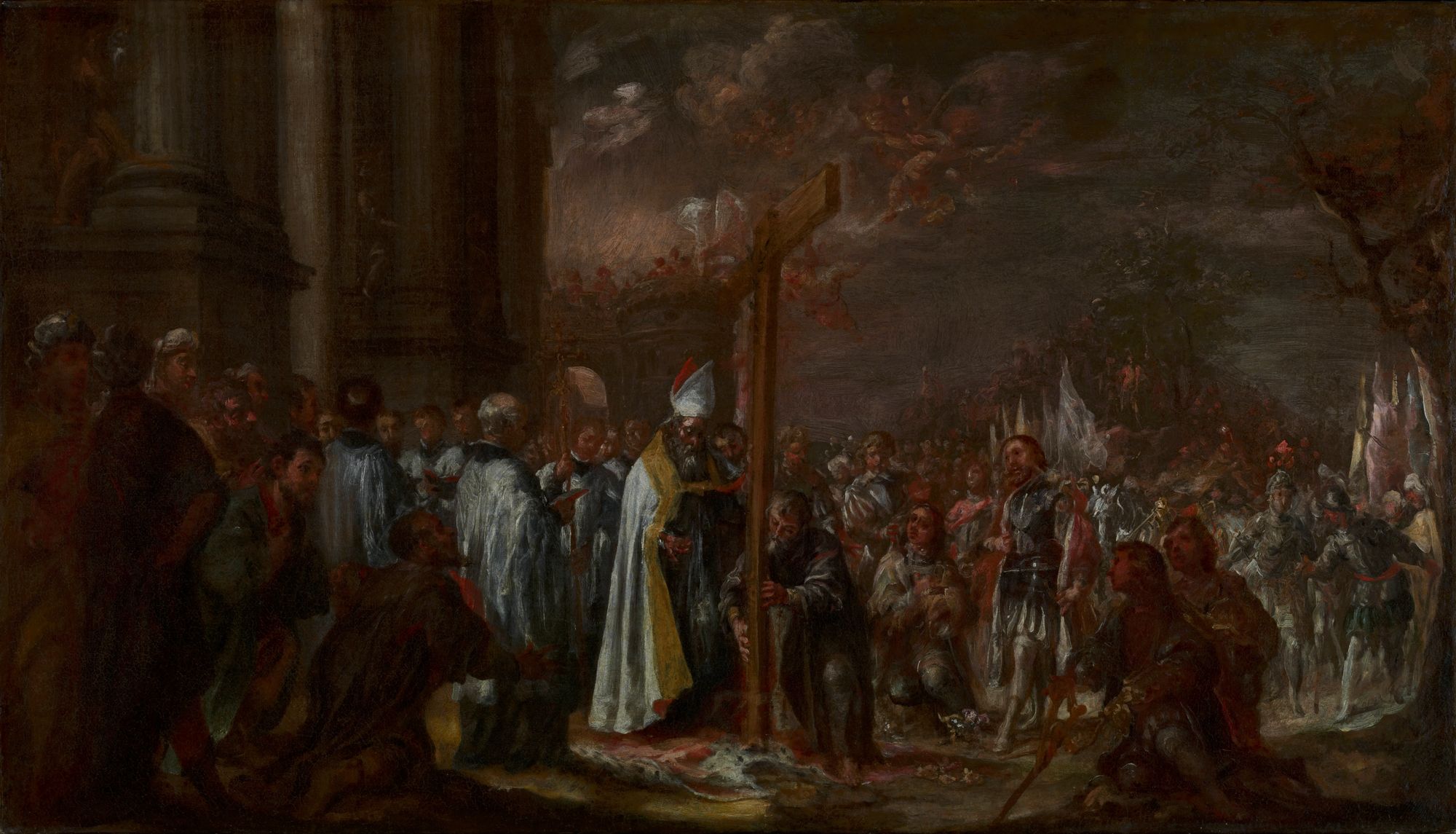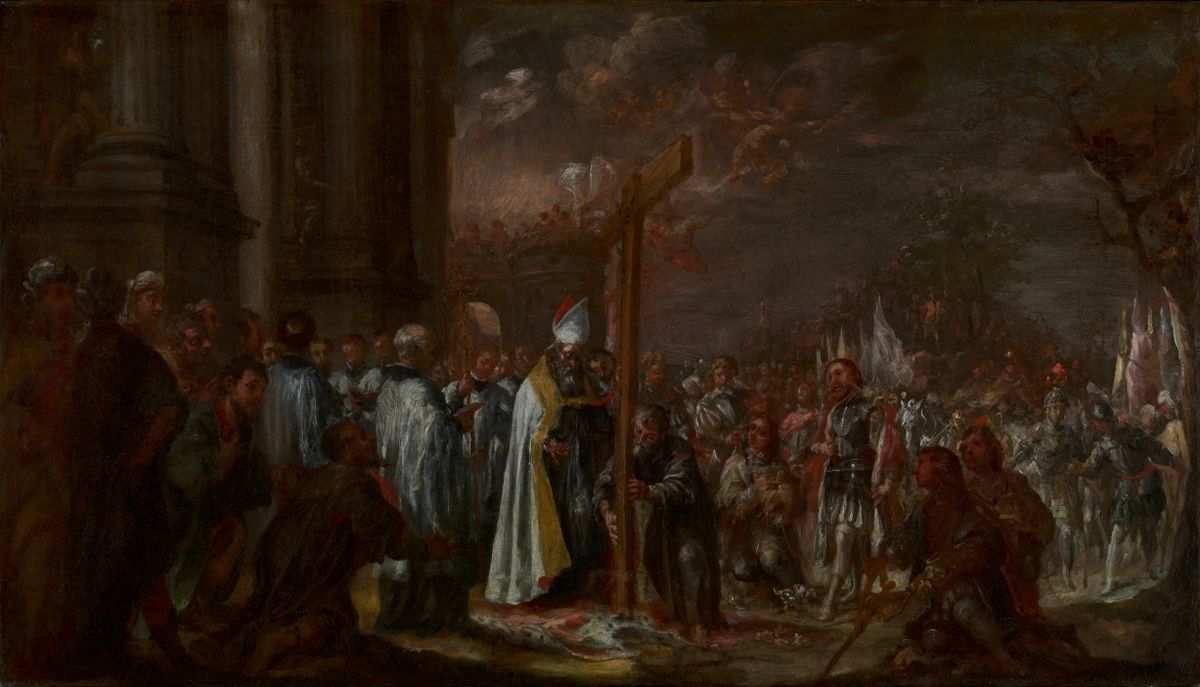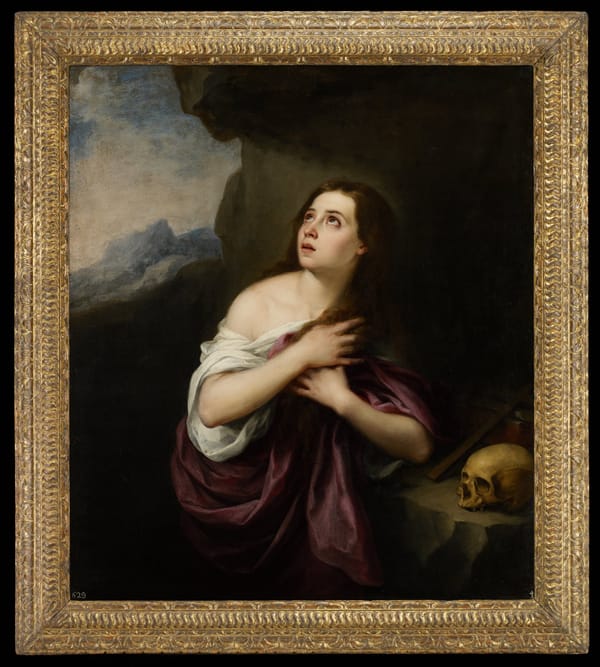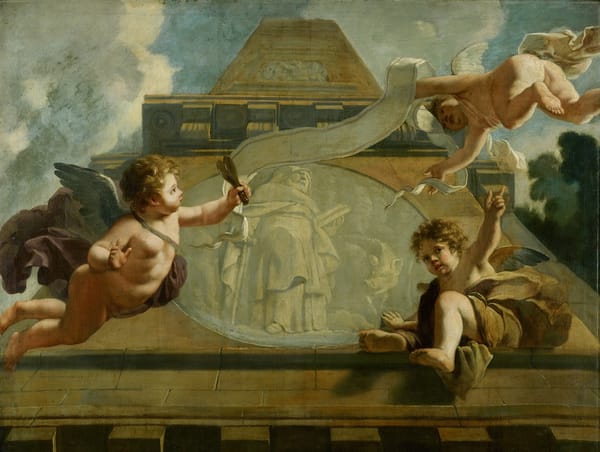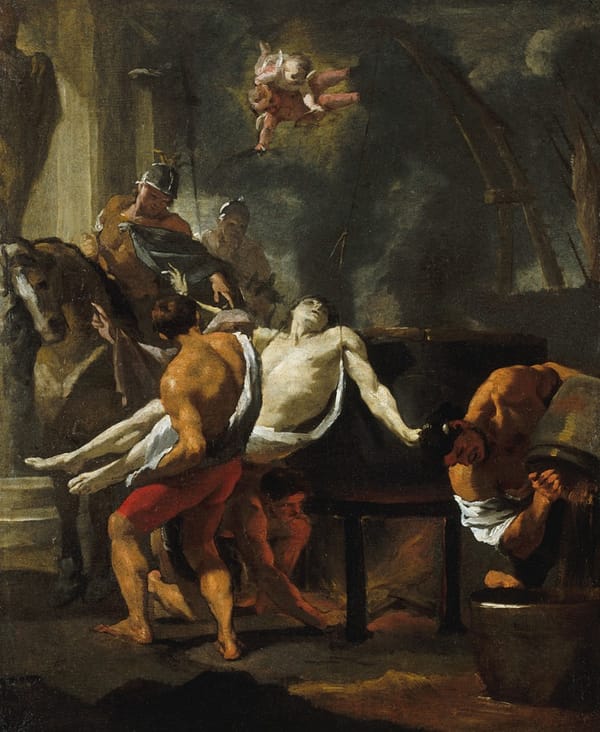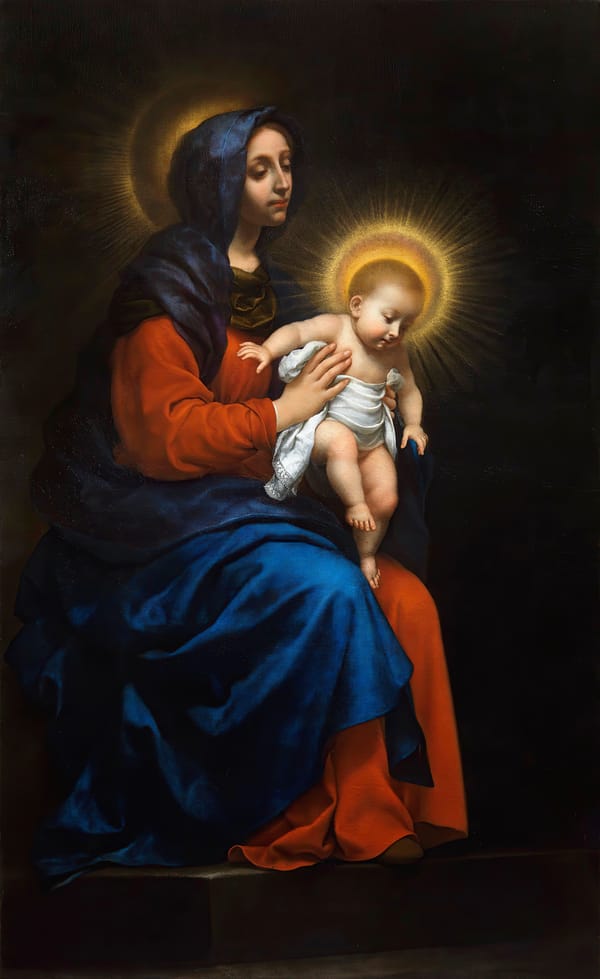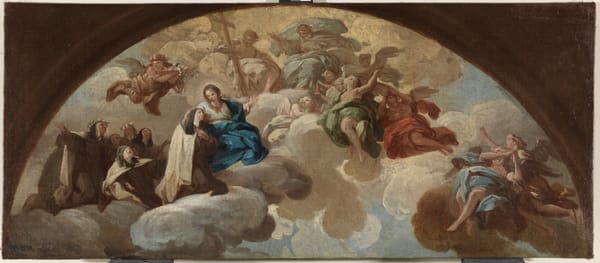Surrounded by a diverse array of onlookers, the Byzantine emperor Heraclius kneels and prepares to raise the holy cross. Barefoot and clad in drab robes, Heraclius has abandoned his fine clothing in order to pass through the gate of Jerusalem with humility. Standing beside Heraclius and clad in a bishop's mitre and white robe is the patriarch of Constantinople, Zachariah. Around this central pair, several spectators have dropped to their knees at the sight of the cross.
In 628 A.D., having recovered the true cross from the Persians, Heraclius appeared at the gate of Jerusalem intending to enter in triumph. But as he and his followers approached the gate, stones fell from the walls, blocking his passage. An angel appeared and told him that in his opulent clothes, he could not enter through the same gate that Christ had humbly entered riding on a donkey. The message of this story is clear: the kingdom of heaven is open only to those who have forsaken the riches of the material world.
The Exaltation of the Cross, in the form of a narrative series, appeared in several early Renaissance frescoes. But it is a subject rarely represented in painting. Juan de Valdés Leal frequently used painted sketches to work out his ideas for large-scale compositions. This oil sketch was created for his last major commission, a monumental fresco for the church of the Hospital de la Caridad in Seville, Spain. This preparatory sketch highlights Valdés Leal's agitated brushwork, thick impasto, vivid coloring, and dramatic sense of movement. Such painterly spontaneity perhaps reflects the spiritual fervor of this famously volatile painter.
Free Downloads Below
Hi-Res
1200px
800px
